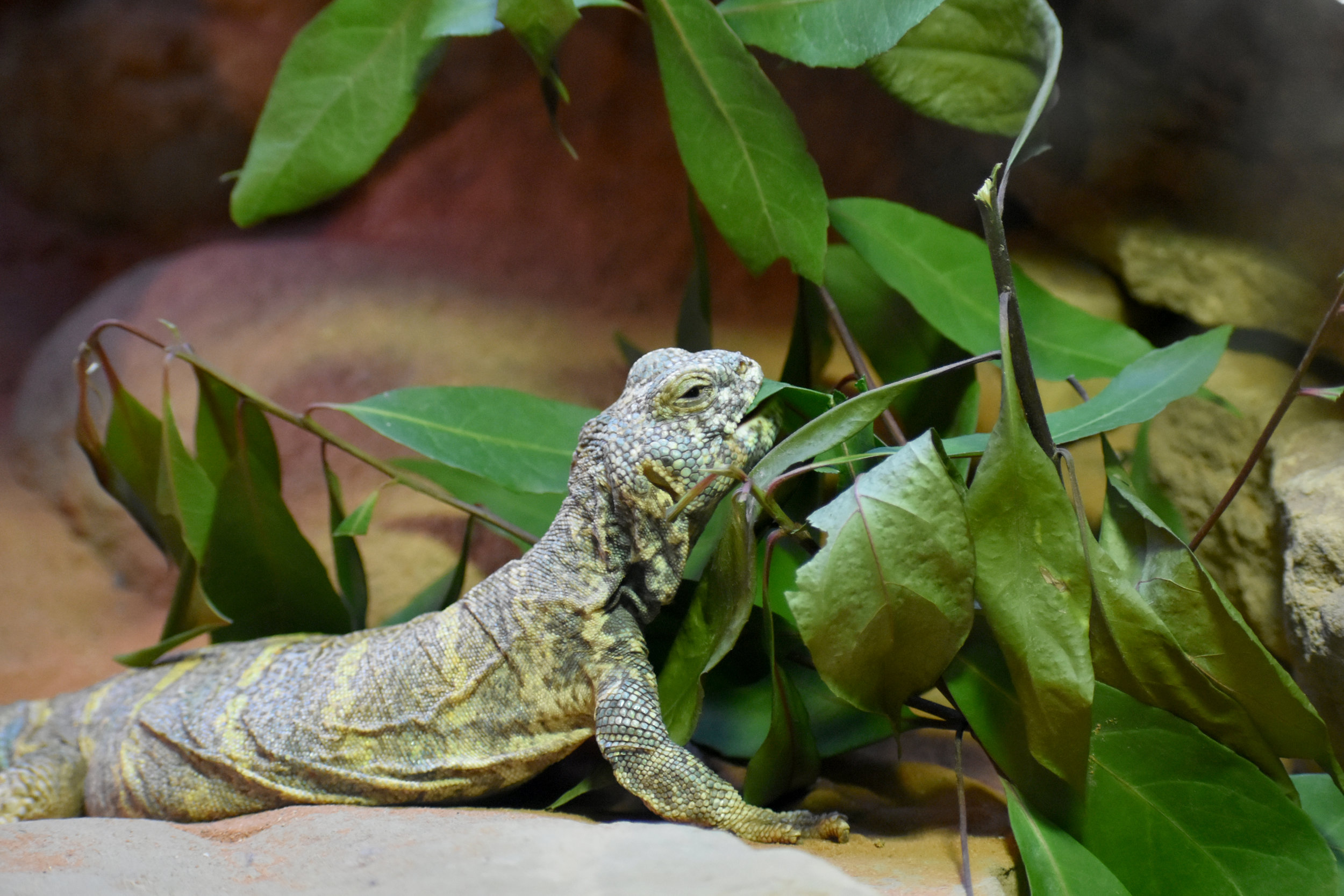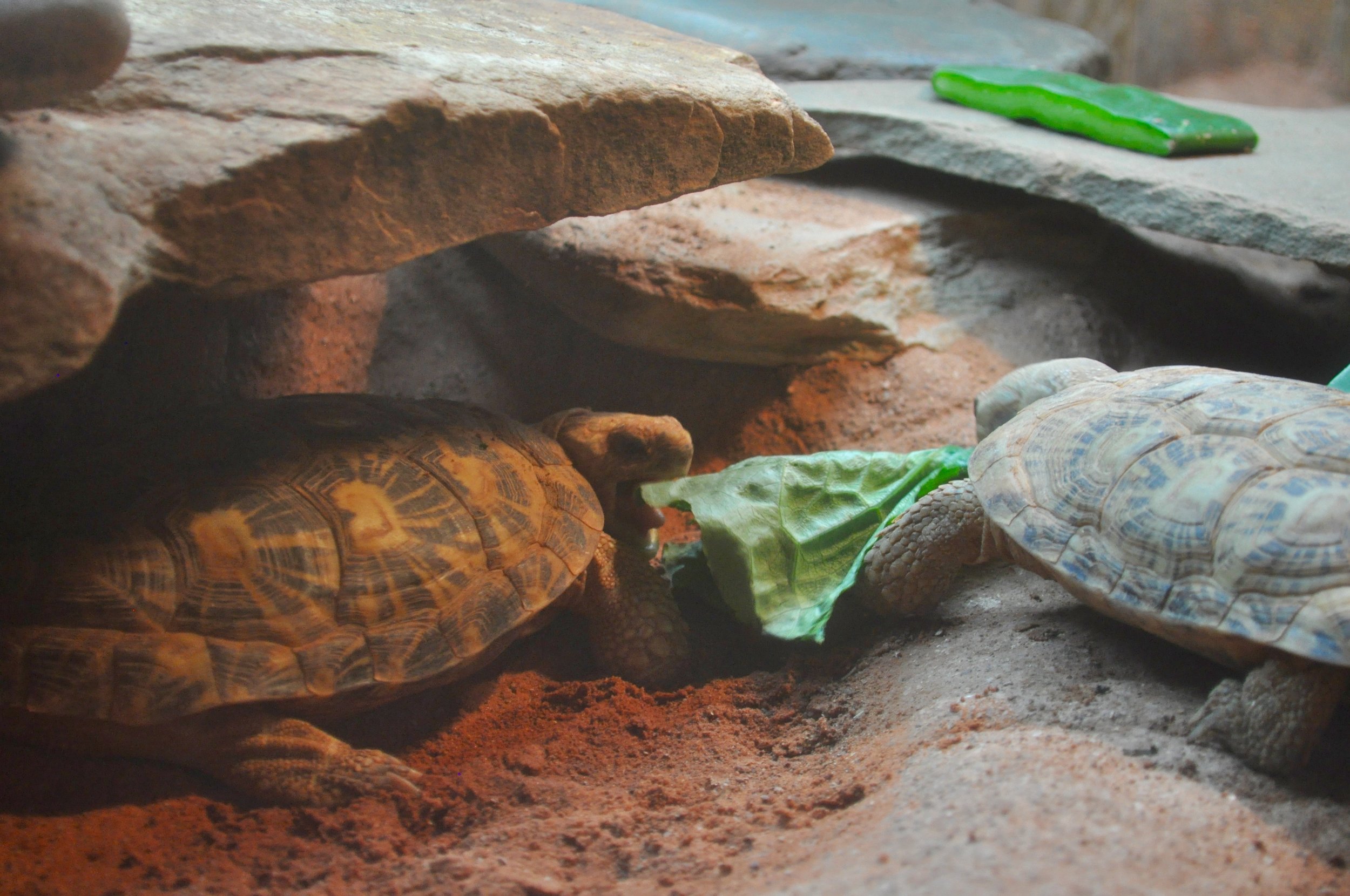Designing Small Enriched Enclosures
For small animals that live in aquariums, tanks or other indoor habitats, such as the ones in the Research Center on the Gorilla Falls Exploration Trail, a lot of planning goes into providing enriched environments. Animal keepers provide heating, cooling, humidity, food and water, substrates, props and furniture. In addition to meeting the animals’ basic needs, the ways in which these items are introduced to a habitat can serve as environmental enrichment. When we are successful in designing dynamic, interactive exhibits, we provide the animals with opportunities to express their natural behaviors, and in turn, allow guests to experience these amazing behaviors up close.
To get started, we do some research about the animals’ natural history, typical environments, and individual history. Every time we set up an exhibit, either brand new or after a thorough cleaning, we design every enclosure as if it were a little slice of nature from the animals’ environment. For example, in the Brown African House Snake (Lamprophis fuliginosus) exhibit, all of the substrate and props are removed and rearranged monthly to provide her with a new stimulating environment. In the wild, this species of snake lives in grasslands, scrublands, and forests. Sphagnum moss, Eco-Earth, leaf litter, and/or mulch can be used as a bedding by itself or mixed together to better mimic her natural environment. Each type offers its own set of new smells, holds moisture differently, and provides a different texture for the snake to experience as if it were passing from one habitat to another. We add a few different hide spots so she can choose where she feels most comfortable, and include some branches for climbing. When first introduced to her newly cleaned habitat, the snake is busy investigating her enclosure for hours. New items like browse and used bird nests are added several times throughout the week for enrichment to encourage more natural behaviors. We routinely see the Brown African House Snake “glued” to a new leaf that has some interesting smell on it. The guests enjoy observing the snake in action much more than a less active snake that sits in a log all day.
The slice of nature for the African Pancake Tortoise (Malacochersus tornieri) exhibit is the base of a rocky cliff in an arid part of Tanzania. These tortoises are one of the fastest and most agile turtles in the world. They climb well and are highly mobile, so their exhibit challenges that behavior with changes in elevation and rocks to climb. We also offer different types of substrate, some soft and some more sturdy, plus multiple hiding spots. Just like us, sometimes tortoises want to be with their friends, and sometimes they want to be off on their own. They also get browse throughout the week located in places to create new hiding spots and further encourage their climbing ability. Even the social grouping of housing 1 male and 2 females together creates opportunities for enriching social behaviors.
The Pancake Tortoise and Brown African House snake are just two examples. Each time we clean the Cairo Sand Boa enclosure, we rebuild her habitat with new substrates, hides, browse and accessories. The features of her exhibit stimulate exploration and provide opportunities for natural behaviors such as burrowing in the sand. We also facilitate investigation for snakes by introducing new scents to their habitats. The Dumeril’s boa will spend hours examining and resting upon leaves from the nearby aviary. Another way we create stimulating environments is by presenting food items in unique and challenging ways. For the spiny-tailed lizard, a hanging feeder filled with lettuce piques his interest, gets him active and provides an opportunity to forage for his meal.
We create beautiful enclosures that provide a variety of behavioral opportunities for each animal, and these opportunities improve their overall well-being. Happy and healthy animals displaying amazing behaviors enrich us and the guests. This further inspires the creation of enriched exhibits for every animal.


